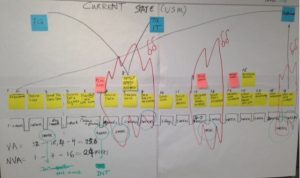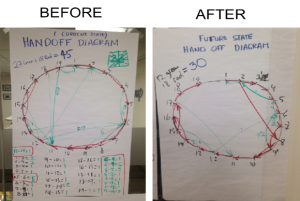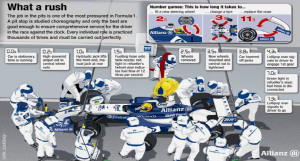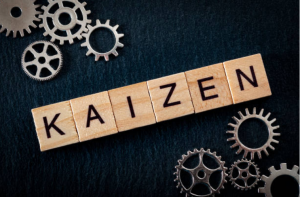Kaizen Supply Chain and Continuous Improvement
Many people think of innovation primarily in terms of product innovation. But process innovation is equally as important–Kaizen supply chain is a great example.
Industrial engineers are used to using tools and technology to improve processes and meet the needs of their customers. These tools help companies achieve operational excellence and continuous improvement to exceed the needs of their customers. One of these tools is Kaizen. Kaizen is Japanese for “improvement” or “change for the better” – a philosophy focusing on continuous improvement of processes. Kai means change and Zen means good. The history of Kaizen begins in the 1930s in Japan, more specifically with Sakichi Toyoda, founder of Toyota.
As an industrial engineer and Lean Leader, I have used Kaizen in supply chain and seen results in manufacturing and operational environments. But these tools can also be applied to a service industry – or to any industry for that matter. In fact, click on the graphic below to see a video on how F1 has been improving their process using Lean tools to drastically reduce time in the pit zone. This is Lean. This is continuous improvement. This makes the difference between winning and losing the race.
To see a two minute video of “then and now” pit stops, go to: https://www.youtube.com/watch?v=RRy_73ivcms
Very similar concepts apply to our business. This year we introduced Kaizen supply chain at ToolsGroup and took the next step in continuous improvement to improve our service to our customers and design better, more efficient implementation processes.
How to Build a Kaizen Supply Chain
We began by defining the scope and objectives of the Kaizen event. This is a key step in the process and requires the support of the management team. Next we defined the team members, including process specialists, and people inside and outside the focus area. The team started to build the current state value stream map by outlining the steps in our SO99+ implementation process. Then the team set out to identify opportunities to improve the process, reduce implementation hours and optimize the data import process.
We used a Pareto diagram to see where we spent the most time in implementation processes and identify was to reduce it. We also used classic tools, such as hand off diagrams and 5”S” for the current and future states, to measure and improve our processes. We identified all current state tasks that didn’t add value to the process (NVA) and loops consuming time unnecessarily. The Pareto and hand off diagrams were especially important to finding opportunities to reduce steps, transactions and time.
The future state SO99+ implementation process showed a significant improvement, converting NVA (non-value added activities) to VA (value added activities). The benefits included an 88% reduction in non-value added activities that did not directly contribute to satisfying customer requirements. We reduced implementation lead time by 51% and the number of transaction by 33%. The team was also able to improve data quality and strengthen the scope prior to project kickoff.

Value Stream Map

Handoff Diagram
One of the difficulties when introducing these tools to an organization can be resistance to change. But in ToolsGroup, our team of supply chain professionals created opportunities from challenges and committed to executing them as a team. We also created a 30 day plan action with team members assigned to follow-on tasks. The lean leader followed open tasks, ensuring completion.
There are still more opportunities to improve the process. Continuous improvement is never really “done.” What’s most exciting is the endless possibility to continually improve the customer experience. A culture of continuous improvement is taking our ToolsGroup consulting team to another level of “Powerfully Simple” process efficiency and simplicity.








